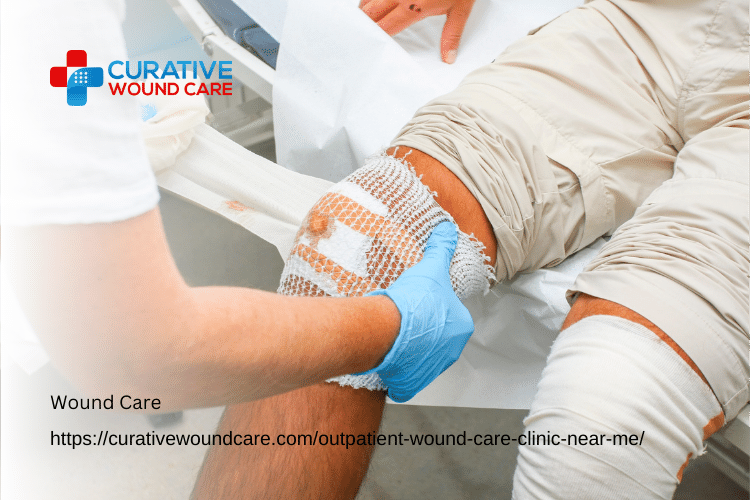The ABCs of Wound Care: Understanding the Basics (Business Opportunities - Other Business Ads)

USNetAds > Business Opportunities > Other Business Ads
Item ID 132810430 in Category: Business Opportunities - Other Business Ads
The ABCs of Wound Care: Understanding the Basics | |
Free Online Advertising Free Internet Web Site Advertising. UK Free Classifieds United Kingdom Free Ads Website. 100% Free Ad Posting. Canada Free Ads Popular Online Classifieds in Canada. No Sign up, No Email Required to Post. Wound care is a crucial aspect of healthcare that empowers individuals to take an active role in their well-being. From minor cuts to more significant injuries, understanding the essentials of wound care is fundamental for promoting optimal healing and preventing complications. In this comprehensive blog, we will delve into Healing 101, covering the foundational principles, step-by-step approaches, and key considerations for effective and holistic wound management. Understanding the Basics: Assessment of the Wound: Begin by assessing the wound's nature and severity. Distinguish between minor cuts that can be managed at home and more significant injuries that may require professional medical attention. Control Bleeding: If the wound is bleeding, apply direct pressure using a clean cloth or sterile dressing. Elevate the injured area if possible. Severe or persistent bleeding necessitates immediate medical attention. Cleaning the Wound: Gently clean the wound with mild soap and water. Avoid harsh antiseptics, hydrogen peroxide, or alcohol, as they can damage healthy tissue. Cleaning helps remove debris, reducing the risk of infection. Step-by-Step Wound Care: Application of Antiseptic: After cleaning the wound, apply an antiseptic solution or ointment to reduce the risk of infection. Antiseptics create a protective barrier and aid in maintaining cleanliness during the initial stages of wound care. Dressing the Wound: Cover the cleaned wound with a sterile dressing or bandage. Dressings serve multiple purposes, including protection from contaminants, maintaining a moist environment, and promoting optimal conditions for healing. Elevation and Rest: Depending on the wound's location, consider elevating the injured area to reduce swelling. Encourage rest to allow the body's natural healing processes to take place. Advanced Wound Care Techniques: Choosing the Right Dressing: Select dressings based on the wound's characteristics. Options include hydrogels, foams, films, and antimicrobial dressings, each serving specific wound care needs. Negative Pressure Wound Therapy (NPWT): NPWT is an advanced technique using negative pressure to enhance wound healing. It promotes tissue granulation, reduces bacterial colonization, and accelerates overall recovery. Debridement: Regular debridement, removing dead or damaged tissue, is crucial for maintaining a healthy wound bed. Methods include surgical debridement, enzymatic debridement, and autolytic debridement. Infection Prevention: Regular Dressing Changes: Change dressings regularly, especially if they become wet, dirty, or saturated with drainage. Regular dressing changes maintain cleanliness and minimize the risk of infection. Antibiotics and Antiseptics: In cases where infection is a concern, healthcare professionals may prescribe antibiotics or recommend antiseptic solutions. These interventions manage bacterial growth and reduce the risk of complications. Factors Influencing Healing: Nutrition: Maintain a well-balanced diet rich in vitamins and minerals. Proper nutrition supports the body's healing processes and contributes to a faster recovery. Hydration: Stay adequately hydrated. Proper hydration is essential for overall health and maintaining skin elasticity, supporting wound healing. Lifestyle Choices: Avoid smoking and limit alcohol consumption. Smoking can impede blood flow, hindering the healing process, while excessive alcohol intake may compromise the immune system. Follow-Up and Ongoing Care: Adherence to Medical Advice: Follow any medical advice or prescribed medications provided by healthcare professionals. Adherence to recommended treatment plans ensures comprehensive care and facilitates optimal healing. Regular Check-ups: Schedule regular check-ups with healthcare providers if required. Periodic assessments allow for ongoing monitoring of the wound's progress and adjustments to the treatment plan if necessary. Conclusion: Healing 101 encapsulates the fundamental principles of wound care, guiding individuals from the initial response to ongoing monitoring and follow-up. By understanding and applying these essentials, individuals can actively participate in their healing journey, promoting optimal outcomes and minimizing the risk of complications. Always remember that seeking professional medical advice for severe or complex injuries is advisable for the best possible care.  | |
| Related Link: Click here to visit item owner's website (0 hit) | |
| Target State: All States Target City : All Cities Last Update : Nov 18, 2023 3:57 PM Number of Views: 213 | Item Owner : WoundCare Contact Email: (None) Contact Phone: (None) |
| Friendly reminder: Click here to read some tips. | |
USNetAds > Business Opportunities > Other Business Ads
© 2024 USNetAds.com
GetJob.us | CANetAds.com | UKAdsList.com | AUNetAds.com | INNetAds.com | CNNetAds.com | Hot-Web-Ads.com | USAOnlineClassifieds.com
2024-05-04 (0.449 sec)